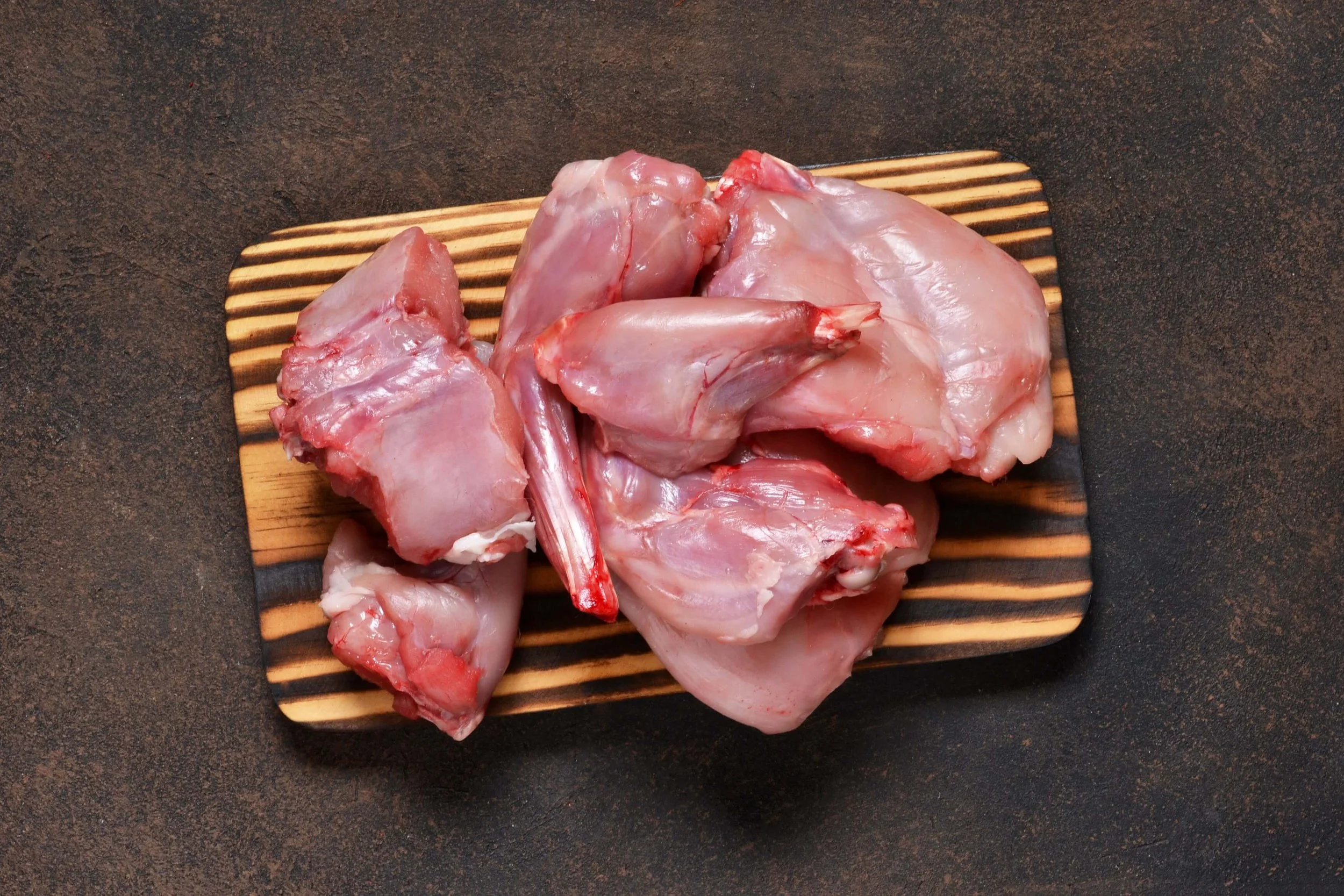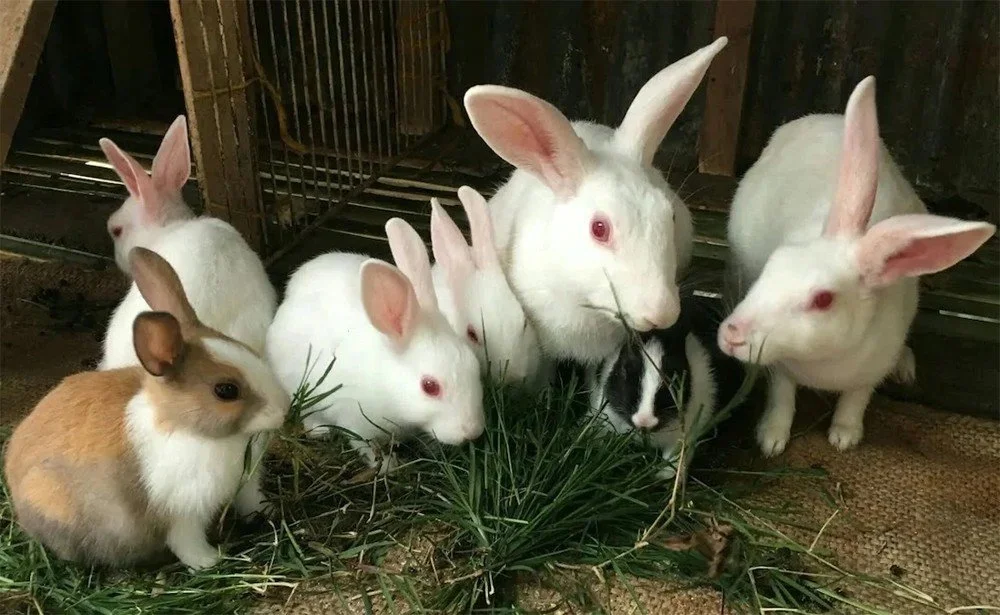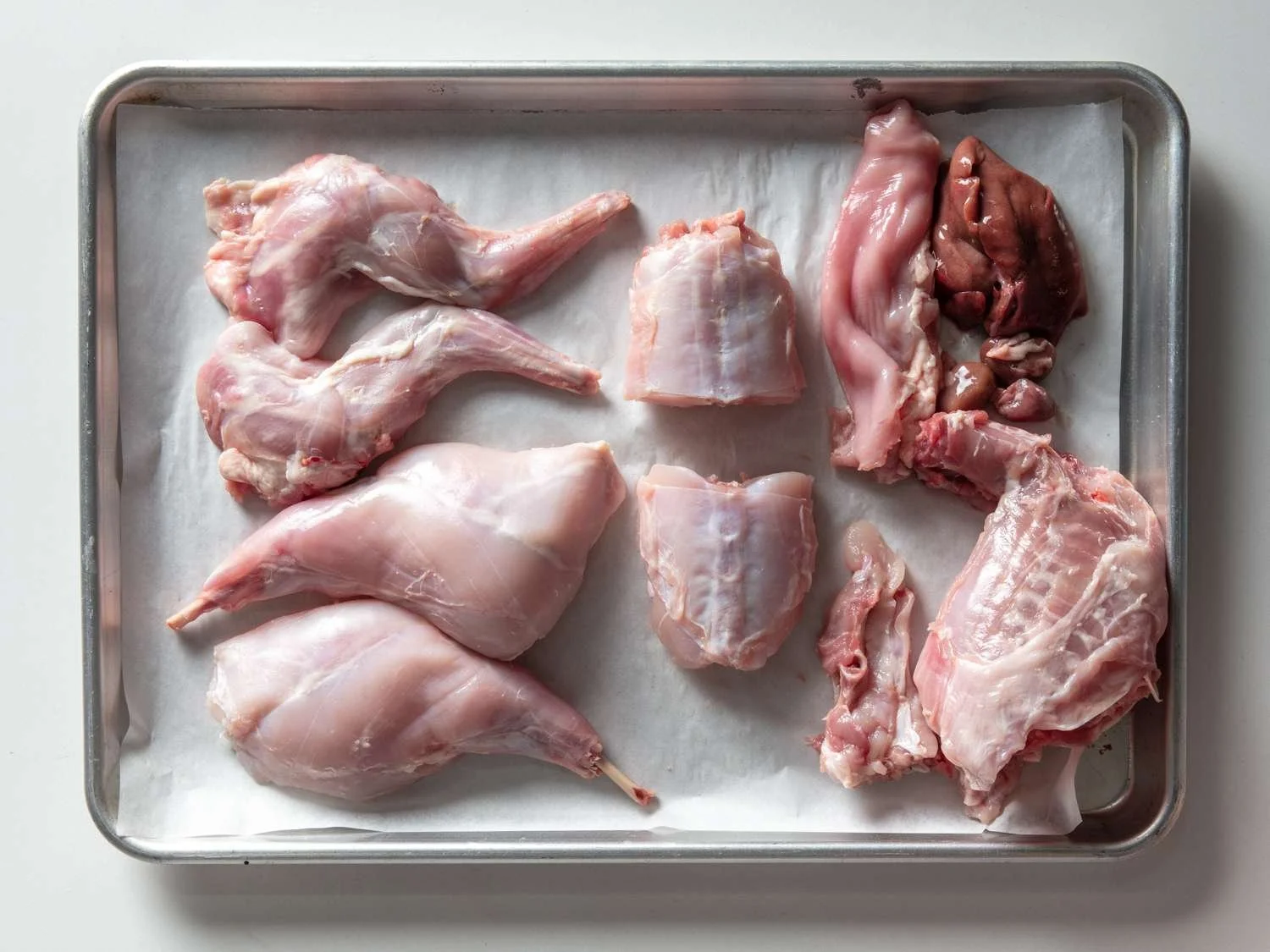How to Market Rabbit Meat
Discover > Raising Rabbits > How to Market Rabbit Meat
The rabbit meat market is a niche but increasingly popular sector in the broader meat production industry. As consumers become more health-conscious and environmentally aware, the demand for alternative protein sources is on the rise. Rabbit meat, often referred to as "meat rabbits," presents a unique opportunity for both producers and consumers. We will cover everything from the basics of rabbit production to strategies for successfully marketing and promoting rabbit meat. Let's start by exploring the demand for rabbit meat and the numerous benefits it offers to those who choose to include it in their diets while also delving into the opportunity to raise rabbits for meat.
Exploring the Demand for Rabbit Meat
Rabbit meat is gaining popularity among consumers looking for sustainable, nutritious, and delicious food choices. The demand for rabbit meat can be attributed to several factors. First and foremost, rabbit meat is known for its lean and healthy qualities. It contains less fat and cholesterol than other meats like chicken, making it a preferred choice for health-conscious individuals. Additionally, it is an excellent source of high-quality protein, essential vitamins, and minerals. So, what is rabbit meat called? As it is still an uncommon meat it doesn’t have a specific name, like steak for beef, so it is just known as rabbit meat. Is rabbit red meat? Rabbit meat is usually classed along with chicken and turkey as a white meat. (What wine goes well with white meat?) This means it contains less myoglobin, which is the red, the iron-containing protein in other muscles.
Furthermore, the ethical and environmental aspects of rabbit meat production are compelling. Raising rabbits for meat has a significantly lower carbon footprint compared to traditional livestock. The animals themselves require less space and resources, making rabbit farming more sustainable and eco-friendly.
Consumers concerned about animal welfare are also drawn to rabbit meat due to the comparatively humane and ethical treatment of rabbits in the meat production process. These factors, along with the meat's unique taste and versatility in various culinary applications, make rabbit meat an attractive option for a growing number of individuals. As a rabbit raiser and marketer of rabbit meat, understanding and effectively communicating these benefits to your target audience is key to tapping into this rising demand.
Benefits of Eating Rabbit Meat
When marketing rabbit meat, it's essential to emphasize the numerous benefits it offers consumers, both in terms of health and sustainability.
Firstly, from a nutritional perspective, rabbit meat is a standout option. It's remarkably lean, containing less fat and cholesterol compared to chicken meat, making it an attractive choice for those seeking to maintain a healthy diet. The meat is also rich in high-quality protein, essential vitamins, and minerals. For individuals looking to increase their protein intake without adding excess fat to their diet, rabbit meat is a perfect solution.
From an environmental standpoint, raising rabbits for meat production is an eco-conscious choice. It has a significantly lower impact on the environment compared to traditional livestock farming. Rabbits require less space, consume fewer resources, and produce less waste, making rabbit farming a more sustainable and planet-friendly option. This is particularly appealing to consumers who are environmentally aware and are seeking to reduce their carbon footprint through their dietary choices.
Moreover, the ethical treatment of rabbits in meat production is an important consideration. Unlike some conventional livestock practices, raising rabbits for meat often involves more humane and ethical treatment of the animals, which resonates with consumers who prioritize animal welfare.
Marketing rabbit meat should involve highlighting these key benefits to attract a diverse range of consumers, from the health-conscious to the environmentally aware and those concerned with animal welfare. Understanding and effectively communicating these advantages will contribute to the success of your rabbit meat marketing venture.
Rabbit Meat Production and Quality
The quality of rabbit meat and the methods used in its production are critical factors in the success of marketing rabbit meat. This section will delve into the essentials of raising meat rabbits and understanding the quality and nutrition of rabbit meat.
Raising Meat Rabbits
Selecting the right breeds for meat production is fundamental to success in rabbit meat marketing. Among these breeds, New Zealand and Californian rabbits stand out for their rapid growth and meat quality. Choosing healthy and genetically sound breeding stock is equally crucial. These rabbits will influence the quality of the meat in your production. Ensuring your breeding stock is free from diseases and possesses the desired meat characteristics will set a solid foundation for your venture.
Additionally, providing rabbits with appropriate housing and a balanced diet is essential. Clean and spacious hutches or cages should be maintained to ensure the health and well-being of the rabbits. Access to fresh water and a nutritionally balanced diet is paramount. This focus on their welfare not only contributes to the quality of the meat but also meets the expectations of consumers who appreciate ethical and sustainable animal husbandry practices.
Quality and Nutrition of Rabbit Meat
Understanding the factors that influence the taste and texture of rabbit meat is essential for a successful marketing strategy. The age of the rabbit, diet, and handling can all affect the final product. The meat of younger rabbits is generally more tender and has a milder flavor. The diet of the rabbits, which can include a variety of feed and forage, contributes to the unique taste of the meat. Proper handling and care of the rabbits throughout their life cycle are also crucial to maintain the meat's high quality.
Nutritionally, rabbit meat is a standout option. It's exceptionally lean, containing less fat and cholesterol compared to chicken meat, making it a choice for those who desire a healthier protein source. It's also packed with high-quality protein, essential vitamins, and minerals, making it a nutritionally rich option for health-conscious individuals.
By maintaining high standards in rabbit care and highlighting these nutritional benefits, you can ensure that your rabbit meat is tender and flavorful, appealing to consumers who appreciate the uniqueness and health benefits of this protein source. Marketing rabbit meat should include these key points, which resonate with health-conscious and discerning consumers alike.
Establishing a Rabbit Meat Production Business
Now that we've covered the essentials of rabbit meat production and quality, it's time to explore the critical steps in establishing a rabbit meat production business. This section will guide you through building a sustainable rabbit-raising operation and implementing efficient production practices.
Building a Sustainable Rabbit Raising Operation
To successfully establish a rabbit meat production business, you must start with acquiring the right breeding stock and live rabbits. Selecting genetically sound, disease-free breeding stock is paramount. Breeding stock should have the desired meat characteristics that align with the preferences of your target consumers. This foundation sets the stage for the quality of meat you'll produce.
In terms of the production system, creating an environment that prioritizes the well-being of the rabbits is essential. Ensure that they have clean and spacious hutches or cages, access to fresh water, and a balanced diet. These elements not only promote the health and comfort of the rabbits but also contribute to the high quality and taste of the meat they produce. Rabbit manure, one of the often-overlooked byproducts of rabbit farming, can be a valuable resource in crop production. Utilizing it as an organic fertilizer aligns with sustainable and eco-friendly practices, which is a significant selling point for environmentally-conscious consumers.
Efficient Rabbit Production Practices
Maintaining an efficient production system is crucial to meet market demand and ensure the health and welfare of your rabbits. Consistency in providing fresh water and nutritionally balanced food is paramount. Furthermore, creating a stress-free and disease-free environment for the rabbits will significantly impact the quality and flavor of the meat they produce. Efficient management of resources such as space, food, and water is also essential for the economic viability of your business.
By focusing on sustainable practices and ensuring the well-being of your rabbits, you not only produce high-quality meat but also align your business with the growing demand for ethically and environmentally responsible products. As a rabbit raiser, you have the opportunity to contribute to a more sustainable and healthier future while running a successful meat production business. This commitment to sustainability should be a central theme in your marketing efforts, resonating with environmentally-conscious consumers who value responsible and ethical food production practices.
Processing Rabbit Meat
After establishing a solid foundation for your rabbit meat production business, it's crucial to understand the process of processing rabbit meat and the various products that can be derived from it. This section will delve into ethical slaughter and butchering methods and explore the range of diverse rabbit meat products.
Ethical Slaughter and Butchering
When it comes to processing rabbit meat, it is of utmost importance to ensure the ethical and humane treatment of the animals. This is not only essential for the welfare of the rabbits but also for the quality of the meat. Humane and ethical treatment includes utilizing slaughter and butchering methods that minimize stress and pain for the rabbits. Compliance with legal regulations regarding animal welfare and food safety is critical to protect both the animals and the consumers of your rabbit meat products.
Diverse Rabbit Meat Products
Processing rabbit meat can lead to a wide range of products beyond just fresh cuts. One popular and traditional dish is rabbit stew, which can be prepared and marketed as a ready-to-cook meal. Additionally, rabbit meat can be used in the creation of pet food, tapping into the trend of healthier, natural pet products. When marketing these products, proper packaging and labeling are essential. Clear and informative labels help potential buyers understand the source and quality of the product. Attractive packaging, on the other hand, can catch the consumer's eye and make your products stand out on the shelves.
By offering a diverse range of rabbit meat products, you can cater to a broader audience with various preferences and needs. This diversity will set your business apart and position it as a versatile source for high-quality rabbit meat and related products, contributing to the success of your rabbit meat marketing efforts.
Effective Marketing and Promotion Strategies
Once you've established your rabbit meat production business and have various products ready, it's time to dive into effective marketing and promotion strategies. Identifying your target markets and leveraging both online and offline marketing tools are crucial aspects of promoting rabbit meat. So, where can you sell rabbit meat near me or offer meat rabbits for sale?
Identifying Target Markets
To market rabbit meat effectively, you must first identify your target markets. There are several distinct consumer segments interested in rabbit meat, each with unique preferences and needs:
Health-Conscious Consumers: Individuals seeking lean and nutritious protein sources.
Environmentally Aware Consumers: Those who prioritize sustainable and eco-friendly food choices.
Culinary Enthusiasts: Home cooks and chefs looking for unique ingredients.
Pet Owners: People interested in high-quality, natural pet food options.
Aspiring Rabbit Raisers: Individuals seeking live rabbits for breeding or as pets.
By understanding these diverse segments and their specific interests, you can tailor your marketing approach to meet their needs. This personalized strategy will resonate with consumers and help you build a loyal customer base.
Leveraging Online and Offline Marketing Tools
To reach your target markets effectively, consider a combination of online and offline marketing tools:
Online Presence
Create a professional website to showcase your products, share educational content about rabbit meat, and provide a platform for online sales. Utilize social media platforms to engage with your audience and promote your products.
Offline Marketing
Attend local food fairs, farmers' markets, and community events to connect with potential customers. Collaborate with local restaurants and chefs interested in serving rabbit dishes. Create informative brochures and flyers to distribute in your local area.
By leveraging these marketing tools, you can broaden your reach and engage with a diverse audience of rabbit meat consumers. Your marketing efforts should not only emphasize the quality and benefits of rabbit meat but also highlight its role in sustainable and responsible food production.
Navigating the Rabbit Meat Market
Our extensive exploration of the rabbit meat market has encompassed every vital aspect, from raising rabbits and owning rabbits to their production, processing, and effective promotion. To thrive in the rabbit meat market, it's imperative to maintain a vigilant focus on sustainable practices, humane animal treatment, and the distinctive merits of rabbit meat. By embracing these core values and implementing potent marketing strategies, you can successfully establish and grow your rabbit meat production business, with raising rabbits and owning rabbits as integral components of this exciting journey. As you venture into this dynamic industry, remember that you're not merely marketing rabbit meat but also fostering a more sustainable and health-conscious future, with raising rabbits and owning rabbits serving as integral components of this exciting endeavor. Now, it's time to raise your own rabbits at home and be part of this growing and rewarding industry.








